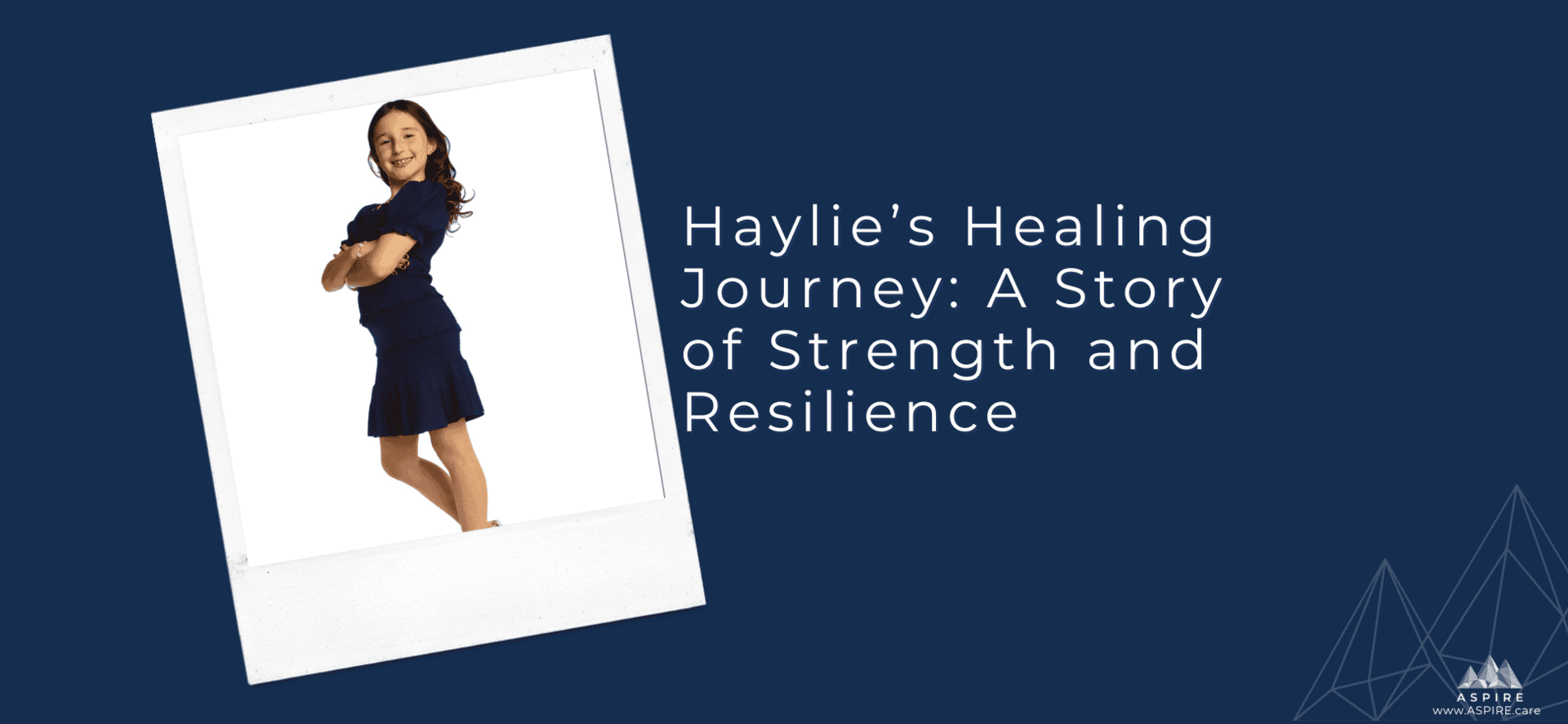Our story could be your story. We are loving, educated parents who did everything we could to give our children the best life. Haylie was a bright, creative, and adventurous child who hit all her developmental milestones early. She had a full schedule of activities, many friends, and a joyful spirit. But by the end of Pre-K, I noticed that her emotional responses didn’t always match the situation. She would become dysregulated over seemingly small things. As a school counselor, I recognized the signs early, and we started play therapy to help her build coping tools.
By the middle of Kindergarten, I reached out to her teacher, only to be told, “Haylie is an angel in school, I don’t know what you are talking about.” As she entered first grade, things worsened. She was constantly upset and unable to calm down. We tried Cognitive Behavioral Therapy (CBT), then Parent-Child Interaction Therapy (PCIT), hoping to bridge any gaps at home. We graduated from PCIT before second grade, believing things were manageable. Until they weren’t.
In December, Haylie started needing to “confess” things to us before bedtime. It started small but escalated. By January, she came home from school with raw, bleeding hands from excessive washing. The school agreed to monitor it, but things spiraled. On January 19th, at a friend’s birthday party, she spent the entire time crying in the bathroom. She refused to eat because everything felt contaminated. That night, she fought taking a shower. The towel was dirty. The stool was dirty. The water was dirty. Night after night, it was a battle of tears, screaming, and fear. Our home became a war zone.
By February, her rages lasted hours. The things she said scared us. One night, after our younger daughter was diagnosed with strep, Haylie had an unbearable episode. As I lay in bed, exhausted and broken, I had an epiphany—there was a disorder linked to strep that caused psychiatric symptoms. Some of my students at school had had this. I turned to my husband and said, “Haylie has PANDAS.” He looked it up, and the symptoms matched perfectly.
The next morning, I took Haylie to urgent care. Despite no physical symptoms, I insisted on a strep test. The PA reluctantly swabbed her. Twenty minutes later, he returned, shocked. “Ma’am, your daughter is positive.” Relief and fear crashed over me. We had an answer. But now, what?
Haylie started antibiotics, and I plunged into researching PANDAS. I joined support groups, found specialists, and learned that her symptoms weren’t just behavioral—they were caused by an immune response attacking her brain. We ran bloodwork and found multiple underlying infections, immune deficiencies, and inflammatory markers.
Treatment was intense: antibiotics, antivirals, natural supplements, anti-inflammatories, and immune support. We needed trial and error, patience, and resilience. Antibiotics caused a candida overgrowth, leading to severe urinary urgency and distress. A steroid burst helped when her symptoms worsened. At times, it took eight adults to get her to school. We ruled out epilepsy with an overnight EEG, ran an MRI, and eventually introduced psychiatric medication to stabilize her enough for therapy. She cut out gluten and dairy. Managing her care became my full-time job.
By April, we had assembled our full team: an immunologist, a naturopath, a psychiatrist, a therapist, and her pediatrician. Our house looked like a pharmacy. She took three antibiotics, an antiviral, an antihistamine, fish oil, vitamin D, grapefruit seed extract, olive seed extract, and a homeopathic remedy. She detoxed from die-off reactions and took probiotics to protect her gut. It was overwhelming, but we had a plan.
Haylie’s official diagnosis was PANS (Pediatric Acute-onset Neuropsychiatric Syndrome), an autoimmune condition where infections trigger brain inflammation, leading to abrupt psychiatric symptoms. Her bloodwork revealed past infections with strep, coxsackie, pneumonia, and Bartonella (a Lyme co-infection). PANS is unpredictable. Instead of getting fevers or sore throats, exposure to illness caused psychiatric flares—severe anxiety, OCD, emotional dysregulation, and rage episodes. Looking back, I realized her early emotional struggles were undiagnosed PANS flares.
The key to treatment was aggressive intervention. But finding the right doctors was a battle. Most practitioners were unaware of PANS or didn’t believe in its severity. We were lucky to get a diagnosis within months—many families go years without answers.
After a year of treatment, Haylie made significant progress. Her bloodwork improved, and we saw more of her returning. But healing isn’t linear. There were setbacks, exposures, and flares. Some days, the intrusive thoughts drowned her. But she fought. She clung to her family’s love and learned she was stronger than she knew.
As a family, we adapted to our “new normal.” We learned to recognize flares, advocate for her in school, and support her through her 504 plan. Most importantly, Haylie learned to be her own advocate. She embraced her journey, her strength, and her voice. She wasn’t just a survivor—she was a warrior.
Now, Haylie wants to give back. She’s creating Haylie’s Healing Hub, a support group for kids with PANS/PANDAS, a space where they can share experiences and know they’re not alone. Awareness and early intervention are crucial. If more parents and doctors understood PANS, fewer children would suffer unnecessarily.
This is why we share our story. Because no family should have to fight this battle alone. And no child should have to lose themselves to an illness that can be treated with the right care and advocacy.


